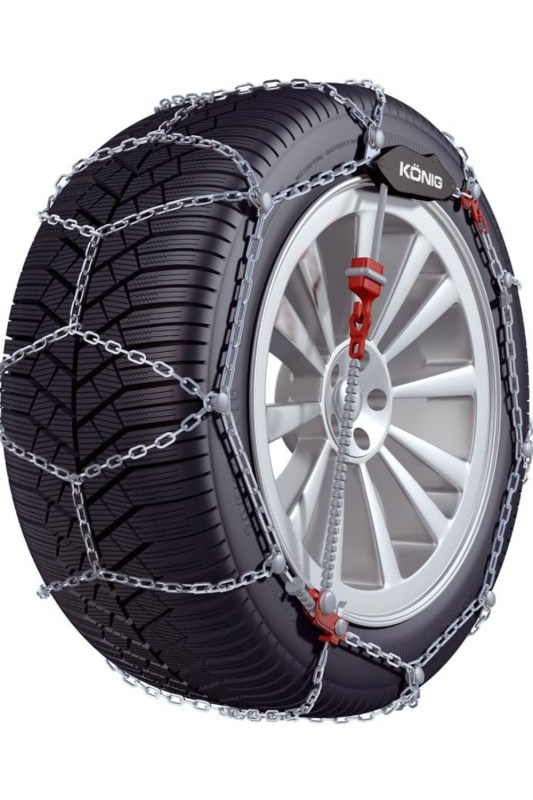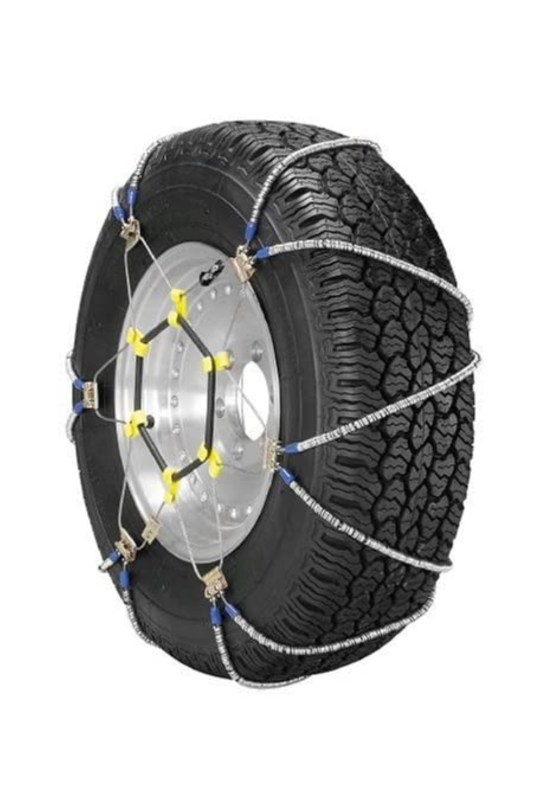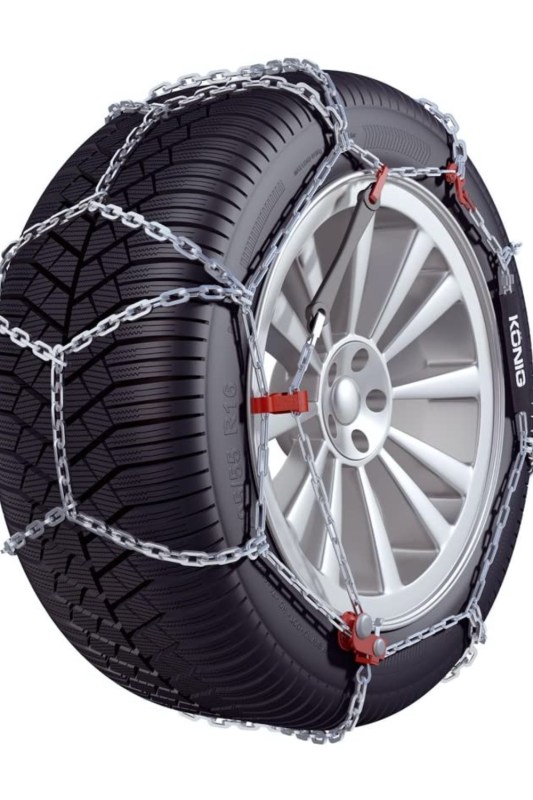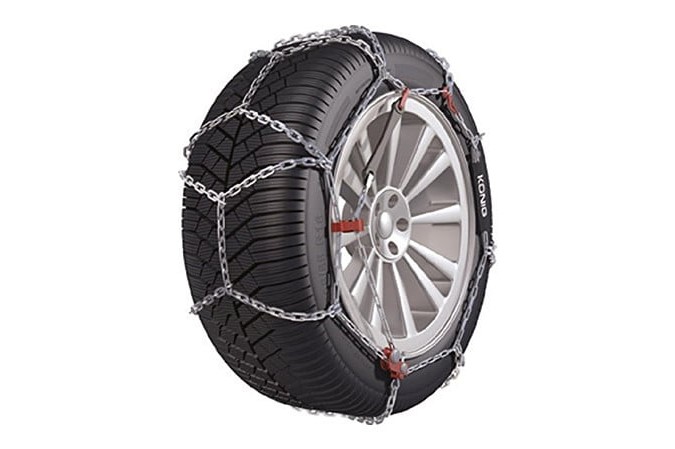
For most drivers, snow tires are more than enough to get through a snowstorm. For others who live in areas of the country that get pummeled by more than a few feet of snow every year, snow tires may not be enough. Some states get battered with snow in the winter and some drivers live in remote places where snowplows can’t reach. In these areas, tire chains are a necessity.
Tire chains, which are also called snow chains, aren’t legal everywhere. Certain states have strict requirements on where and when tire chains can be used. Before you start searching for a set of snow chains for your car, it’s best to do some research on whether they’re allowed in your state and when they can be used.
When you’re considering which snow chains to purchase, there are a few factors to consider. You’ll need to know how large your vehicle’s tires are, how much clearance the snow chains will have once they’re fitted onto your tires, and how much you’re willing to spend. You’ll also need to have a relatively large trunk, as that’s where the chains will remain until you’re ready to put them on.
If you have a passenger car, you have to purchase snow chains that carry an SAE Class S rating. The rating means that these chains are meant to be used by front-wheel-drive cars with low ground clearances. The best snow chains for trucks may not be the same for small cars. Keep that in mind when looking for a set of chains.
With all that out of the way, here are our best snow chains for cars. The majority of the chains on this list will work on pickup trucks and SUVs, too.
Security Chain Company Super Z6 Cable Tire Chain
Regardless of whether you have a car, truck, or SUV, there’s a good chance that Security Chain Company’s Super Z6 tire chain will fit your vehicle. The cable-based chains are incredibly low profile, only taking up 1/4th an inch of space in the wheel well. They’re also super easy to install, as putting these snow chains on doesn’t require removing the tire or moving the vehicle. These tire chains use a rubber tensioner that ensures the chains are always sitting snuggly against the tires, which means you won’t have to constantly get out and check to see if they’re still on the tires.
Quality Chain Cobra
If you’re looking for tire chains on a budget, the Quality Chain Cobra chains are a great choice to consider. They’re cable-based and have low-profile steel rollers to allow for an optimum amount of tire-to-road contact. The steel rollers are galvanized, as well, so they won’t rust in wintery conditions. You won’t have to move your car back and forth when you install the chains either, making them easy to place on your tires. One of the major downsides of these chains is that the rubber adjusters that you need to fit the chains over your tires are sold separately.
Konig XG-12 Pro
The Konig XG-12 Pro are some of the most expensive tire chains on this list, but there’s a very good reason for that. These tire chains have some incredible engineering to go with the incredibly high price tag. Konig’s chains come with a micro-regulation system to ensure they have the right amount of tension and stay on your tires. Looking at the chains, you’ll notice that they have a special design on them. That design is there for maximum traction in awful winter conditions. Your wheels will be scratch-free with these chains, too, as they come with anti-scratch nylon bumpers.
Thule CG-9 2-Piece Chain Set
Thule was founded in Sweden and is a company that knows how to make products for consumers who like to go on adventures. So, it knows a thing or two about helping people get through heavy snow. Thule’s CG-9 snow chains are some of the company’s more popular options, but they’re packing some innovative technology. The snow chains are made out of nickel alloy steel, have an anti-scratch solution for the rims, and feature a self-tensioning system with micro-regulation for a precise fit. Thule also provides a kit that includes spare parts, mounting instructions, a kneeling mat, and gloves with the chains.
Security Chain Company Super Z Traction Chain
The Security Chain Company’s Super Z tire chains are, according to the company, the “easiest installation of any traction production.” In addition to being easy to install, Super Z tire chains feature built-in rubber tensioners that won’t need to be tightened or adjusted after installation. These tire chains are specifically aimed at drivers who live in areas where they don’t need to use tire chains all that much. They take up little space when it comes to storage, though they may not last as long as traditional chains and may not provide the same amount of traction as other options on this list.
Konig CB-12
Unlike some of Konig’s pricier offerings, the CB-12 chains are more affordable. The lower price tag brings a manual tensioning system that you’ll have to adjust yourself when putting these chains onto your tires. You won’t have to regularly tighten them after driving for a while, though. These have a simple locking device to protect your wheels from scratching that isn’t as fancy as the ones found on its more expensive products, but it does the same job. Like most tire chains, these are easy to install. These chains will not fit on every vehicle, so be sure to double-check Konig’s website to see if these will fit over your tires.
Peerless Auto-Trac Chain
The Peerless Auto-Trac snow chains are the quintessential set of tire chains that come to mind when you think about snow chains. The chains feature self-tightening ratches that automatically get the chain to its proper tightness, taking the fuss out of checking them and making sure they’re properly centered on the tire. The diamond pattern that the chain makes on the tire provides you with great traction on snow and a more comfortable ride than a large-linked radial chain. They’re made out of manganese alloy steel to be relatively light and highly durable. Unfortunately, if you plan on blasting through snow, these aren’t the chains for you. They carry a top speed rating of 30 mph.
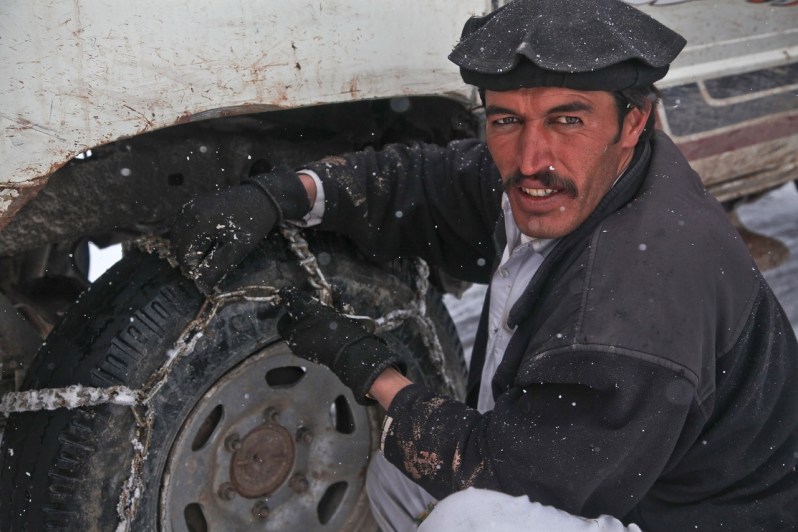
Snow chain safety tips
No matter what snow chains you use on your vehicle, you must install them properly and safely, and once the chains are on your vehicle, drive at the speed that the chains are rated for. The most important thing to remember is that if you decide to put tire chains on while you’re on the road, make sure to pull off to a safe place far enough away from traffic.
Once you have the chains on your vehicle, drive slowly. When you have tire chains on your car, don’t go over 30 MPH; driving at speeds faster than that may cause the chains to break, which is dangerous not just for you but for drivers around you.
Since snow chains slip on bare pavement, avoid driving on bare roads as much as possible. It might not be possible to avoid short distances of bare pavement, but once you get to a place where the roads are clear, pull over safely and remove the chains.
More safety tips
Getting a good set of snow chains is one of the things you can do to winterize your car. Other things include completing any upcoming maintenance, packing an emergency kit, and washing your car. While snow chains will certainly help you get through heavy snow, knowing how to drive in the snow can make you more comfortable with tackling mixed weather conditions.



